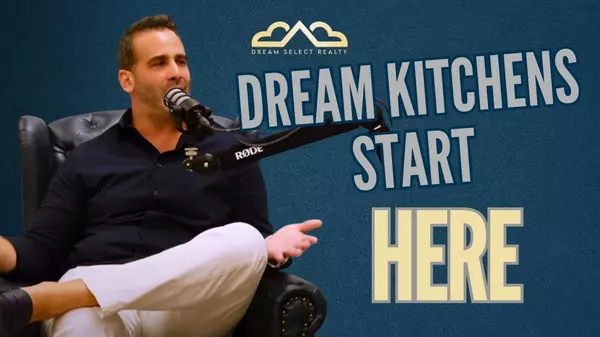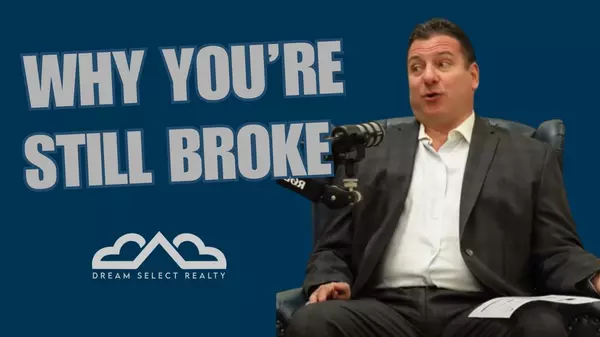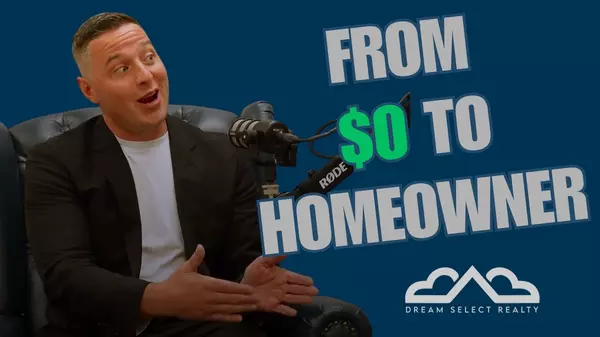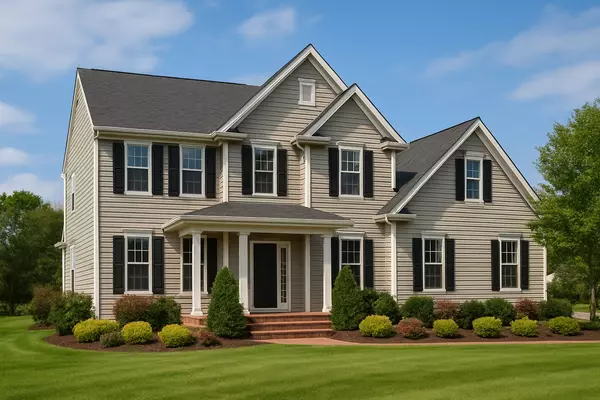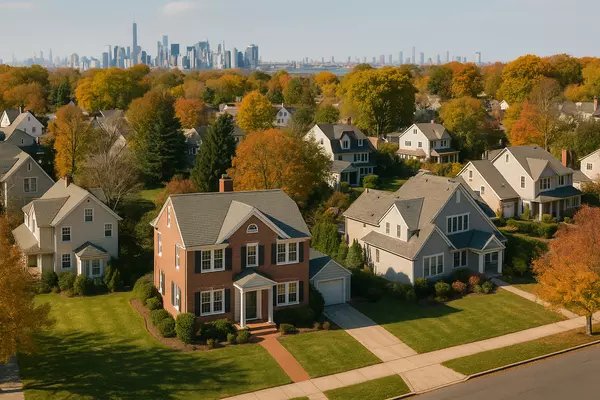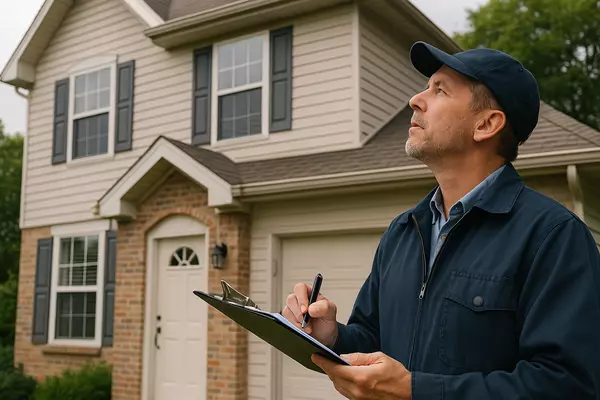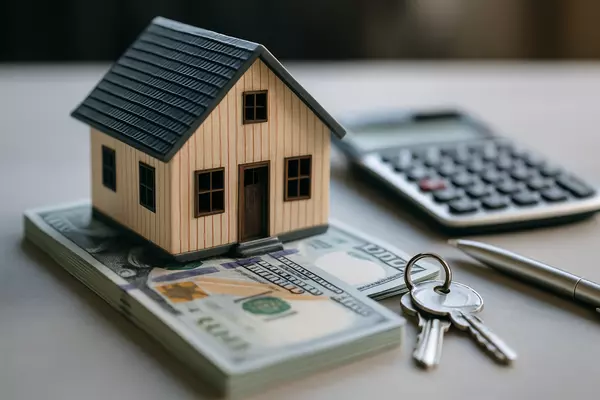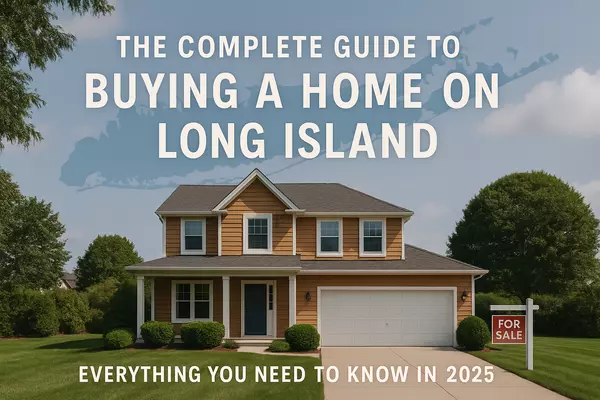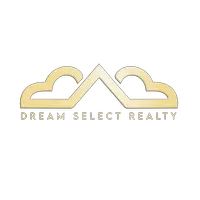Sustainable Living on Long Island: Top Energy-Efficient Homes in Nassau and Suffolk
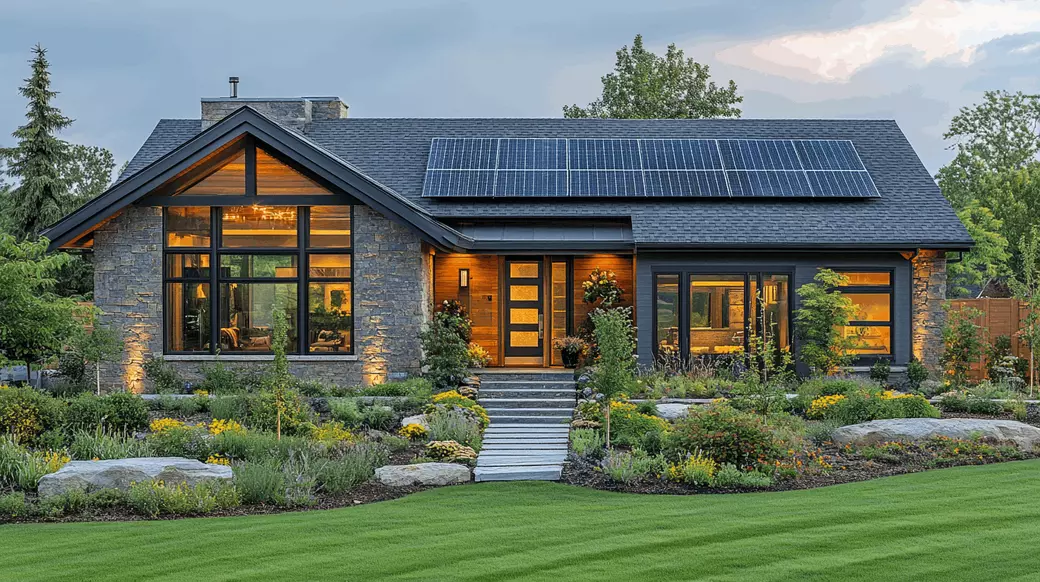
Welcome back to Dream Select Realty’s look into the Long Island real estate market. In this article, we’re focusing on a topic that is becoming more and more important for homebuyers, sellers, and communities: sustainable development. If you’ve ever wondered how to lower your carbon footprint, save money on energy bills, or just want to live in a home that’s healthier for you and the planet, then you’re in the right place.
Long Island, made up of Nassau and Suffolk Counties, has a vibrant real estate scene. We’ve seen a growing interest in eco-friendly homes and green building practices. People want houses that use less energy, have smaller environmental impacts, and offer modern features like solar panels or water-saving technology. Beyond just individual homeowners, local governments and community groups are also getting on board, launching programs to encourage sustainable housing.
In this article, we’ll explore some of the green building trends popping up across Nassau and Suffolk, highlight energy-efficient home features that make suburban living more sustainable, and discuss the local initiatives supporting this movement. As always, Dream Select Realty is here to guide you through the process, whether you’re looking to buy, sell, or invest in Long Island’s real estate market.
So, let’s dive into how Long Island is working towards a greener future—one home at a time.
Part 1: Understanding Sustainable Development
What Does “Sustainable Development” Mean?
“Sustainable development” is a term that gets used a lot, but what does it actually mean? In simple words, sustainable development refers to building or improving homes, neighborhoods, and infrastructure in a way that meets our current needs without harming the ability of future generations to meet their own needs. This means using natural resources responsibly, reducing waste, and making sure our communities can thrive in the long run.
In real estate, sustainable development often involves constructing homes with eco-friendly materials, using renewable energy, and incorporating designs that reduce water and energy consumption. It also covers planning neighborhoods in a way that preserves natural habitats, cuts down on pollution, and improves residents’ quality of life. Here on Long Island, we see a growing demand for new and existing homes that reflect these values.
Why Is Sustainable Development Important on Long Island?
Long Island has a unique landscape. We’re surrounded by water, which means we need to be careful about preserving our shorelines and protecting our drinking water from pollution. Flooding from storms and rising sea levels can also pose a threat to coastal areas. Because of these environmental factors, both Nassau and Suffolk Counties are paying more attention to how homes are built and what materials are used.
Sustainable development helps reduce negative impacts on the environment, which protects our beaches, forests, and communities. It also saves homeowners money by lowering energy and water bills. Plus, houses that are built or renovated with green features often have higher property values and can sell faster, since more buyers want these features.
At Dream Select Realty, we believe that sustainability is not just a trend; it’s a responsibility and an opportunity to create better homes. We also see it as a great way to invest in the future. If you’re planning to stay in a home for many years—or eventually sell it—having green features can make a big difference.
Part 2: Green Building Trends in Nassau and Suffolk Counties
1. Eco-Friendly Construction Materials
Builders on Long Island are increasingly using materials like recycled steel, reclaimed wood, and low-VOC (volatile organic compound) paints. These materials help reduce the release of harmful chemicals into the air and can often be reused or recycled at the end of a building’s life. Here are a few popular materials you might see:
- Bamboo: A fast-growing grass that can replace hardwood floors.
- Recycled Steel: Great for framing and supports, reducing the need for new steel production.
- Insulated Concrete Forms (ICFs): These forms improve insulation, lower heating and cooling costs, and have a longer lifespan than traditional wood frames.
Builders in Nassau and Suffolk are also looking at ways to reuse waste. Some construction companies repurpose shipping containers for building. Others take leftover wood, bricks, or metal to recycling centers instead of dumping them. This helps cut down on landfill waste and saves natural resources.
2. Solar Power and Renewable Energy Systems
A noticeable trend is the growth of solar panel installations on Long Island homes. Nassau and Suffolk Counties enjoy many sunny days throughout the year. Homeowners who put solar panels on their roofs can generate their own electricity, shrink their carbon footprint, and save on energy bills in the long run. Additional incentives, like state and federal tax credits, make solar an attractive option.
In some neighborhoods, you might also find wind turbines or geothermal systems that use energy from the earth to regulate heating and cooling. While solar is more common due to ease of installation, all these renewable energy systems point to a future where more homeowners produce their own clean power.
3. Green Roofs and Landscaping
Green roofs—where the roof of a building is covered in soil and plants—are getting popular for commercial buildings, and some homeowners are experimenting with them on smaller structures. A green roof can help insulate a building, reduce rainwater runoff, and filter pollutants out of the air. Plus, they look beautiful and can be a natural habitat for birds and insects.
Landscaping is also an important part of sustainable development. By choosing native plants that need less water, homeowners can reduce outdoor water usage. Rain gardens, permeable pavements, and strategically placed trees can help manage stormwater and reduce soil erosion. In both Nassau and Suffolk, local gardening groups and community workshops show homeowners how to plant low-maintenance, eco-friendly yards.
4. Smart Home Technology
Smart home systems tie directly into sustainability by allowing you to control your lights, HVAC system, and appliances through a phone or tablet. These systems can reduce energy waste by automatically turning off lights when a room is empty or adjusting the thermostat based on weather forecasts. For suburban neighborhoods, this technology can also manage irrigation systems, making sure lawns only get watered when needed—another big way to save resources.
In Nassau and Suffolk Counties, more newly built homes come with smart technology pre-installed. For older homes, it’s relatively easy to add devices like smart thermostats, smart bulbs, or automated security systems. These upgrades can boost comfort, safety, and sustainability all at once.
Part 3: Energy-Efficient Home Features for Suburban Living
If you’re thinking about buying or renovating a home on Long Island, here are some energy-efficient features that can lower your bills and reduce your environmental impact:
1. High-Quality Insulation and Windows
Proper insulation in walls, roofs, and floors keeps heat inside during colder months and keeps it out during the summer. This reduces the need for constant heating or cooling. Similarly, windows with double or triple-pane glass, low-E coatings, or gas fills can make a huge difference. They stop drafts, keep out moisture, and regulate indoor temperatures better.
2. Energy Star Appliances
When shopping for refrigerators, dishwashers, washing machines, or air conditioners, look for the Energy Star label. This government-backed program helps you find products that meet high efficiency standards. While they might cost a bit more upfront, they usually pay for themselves through lower monthly utility bills.
3. LED Lighting
Switching out incandescent bulbs for LEDs might seem like a small change, but it can have a big impact. LED bulbs use up to 75% less energy than traditional bulbs and can last up to 25 times longer. For larger suburban homes, the number of light fixtures adds up quickly, so energy-efficient lighting can yield significant savings.
4. Water-Saving Fixtures
Low-flow showerheads, dual-flush toilets, and faucet aerators can cut down on water usage without sacrificing performance. These updates help manage household water bills and conserve a crucial resource. If you’re on a well or have a large yard, water efficiency can be especially important during dry summers or times of drought.
5. Smart Thermostats
A smart thermostat is an easy, cost-effective way to reduce energy waste. Many smart thermostats learn your daily schedule and preferences, automatically adjusting the temperature to save energy when you’re away or asleep. You can also control them remotely through an app, so if you decide to stay out longer, you can prevent the AC from running unnecessarily.
6. Sealing Leaks and Cracks
Over time, even newer homes can develop small cracks or gaps around doors, windows, pipes, and ducts. Sealing these openings is a low-cost way to improve energy efficiency. It prevents heated or cooled air from escaping and keeps drafts out. In older homes on Long Island, weather stripping around doors and windows can make a world of difference.
Part 4: Local Initiatives for Sustainable Housing in Both Counties
1. Government Incentives and Rebates
New York State, along with local governments, offers various incentives for people who invest in green building projects or add eco-friendly upgrades to their homes. Some of these incentives include:
- Solar Tax Credits: You can receive a credit on your state and federal taxes for installing solar panels.
- HVAC Rebates: Cash rebates for upgrading to energy-efficient heating and cooling systems.
- Weatherization Assistance: Programs that help lower-income families improve insulation and reduce energy costs.
Nassau and Suffolk County websites often have updated lists of available incentives, so be sure to check those or ask a Dream Select Realty agent for guidance.
2. Community Workshops and Education
Both counties often host workshops or classes on sustainable living. These might focus on topics like composting, water conservation, or energy efficiency. By attending these workshops, homeowners can learn hands-on methods for making their properties more eco-friendly. Some communities even have demonstration gardens, where residents can see examples of native plants and rainwater collection systems.
Dream Select Realty sometimes partners with local green building experts to host seminars or Q&A sessions. Keep an eye on our website or social media pages for upcoming events. It’s a great way to learn about the newest trends and connect with others who share your interest in going green.
3. Building Codes and Regulations
Local governments influence sustainable development through building codes. In Nassau and Suffolk, these codes may require homes to meet certain energy efficiency standards. For example, new buildings might be required to have better insulation, or builders might have to include certain features that reduce a home’s carbon footprint.
These codes are frequently updated to reflect advancements in technology and changes in environmental policy. While it can feel like an added step during construction or renovation, these regulations help ensure that Long Island’s neighborhoods become more resilient and eco-friendly over time.
4. Green Business Coalitions
Some businesses in Nassau and Suffolk have formed coalitions to encourage eco-friendly operations. These groups may offer grants to builders who follow green practices, or they might create guidelines for sustainable development that go beyond what’s required by law. Working with members of these coalitions can help you find contractors, architects, or interior designers with experience in green building.
Part 5: The Benefits of Sustainable Homes for Buyers and Sellers
Whether you’re a buyer or a seller, going green offers a range of benefits:
-
Lower Costs
Sustainable homes generally have lower utility bills. Buyers can save money each month on electricity, heating, and water. Sellers with energy-efficient upgrades can use lower utility costs as a selling point to attract eco-conscious buyers.
-
Higher Property Values
Studies show that energy-efficient homes often appraise at higher values. Many buyers are willing to pay a premium for a property that already has green features. By investing in solar panels, better insulation, or other eco-friendly upgrades, you could increase your home’s resale value.
-
Healthier Living Environment
Homes built with non-toxic materials and better ventilation systems can help reduce indoor air pollution. This can be a major plus for families with allergies, asthma, or other health conditions. Green homes also let in more natural light, which can improve mood and overall well-being.
-
Positive Environmental Impact
Every step you take towards sustainability helps reduce carbon emissions, waste, and pollution. When entire communities get on board, the impact becomes even bigger. Many people feel a sense of pride and responsibility knowing they’re helping the planet.
-
Resilience and Longevity
Green building materials tend to be durable. For instance, metal roofs can last longer than asphalt roofs. Homes that are designed to handle strong winds, flooding, or extreme temperatures are also better protected from the changing climate. This means fewer repairs and renovations in the future.
Part 6: Tips for Buying or Selling a Sustainable Home on Long Island
For Buyers
- Check for Certifications: Look for homes with green certifications like LEED (Leadership in Energy and Environmental Design) or ENERGY STAR. While not every green home will have these labels, they can be a good sign that a house meets certain standards.
- Ask About Upgrades: If you’re touring a home, ask the seller or listing agent about any eco-friendly features. This could include solar panels, insulated windows, or a smart thermostat. Don’t forget to ask about any warranties on these systems as well.
- Hire a Green Inspector: A specialized home inspector might notice things that a regular inspector could miss, like low insulation levels, water leaks, or inefficiencies in an HVAC system. This helps you understand the home’s overall energy performance.
- Think About Location: Living close to public transportation, schools, and shops can cut down on driving time and reduce your carbon footprint. It can also save you money on gas and car maintenance. If you’re looking for a greener lifestyle, consider how your location affects daily trips.
For Sellers
- Highlight Green Features: If you’ve invested in energy-efficient upgrades, make sure to feature them in your listing. Provide utility bill comparisons to show buyers how much they could save.
- Make Small Improvements: Even minor updates like sealing cracks, upgrading to LED lights, and adding a smart thermostat can make your home more attractive to eco-friendly buyers. These improvements can often be done quickly and at a low cost.
- Get an Energy Audit: A professional energy audit can give you a report showing where your home is using and losing energy. By sharing the results—along with any improvements you make—you can show buyers that your home is green-friendly.
- Work with an Experienced Agent: Not every real estate agent focuses on sustainability. Choose someone, like Dream Select Realty, who understands the local eco-friendly market and can help you set the right price, advertise your home’s green features, and connect you with the right buyers.
Part 7: Overcoming Challenges
While sustainable development has many benefits, it’s not without challenges:
-
Initial Costs
Some eco-friendly features, like solar panels or high-end insulation, can be expensive. However, tax credits, rebates, and long-term savings on utility bills often offset these costs.
-
Learning Curve
If you’re used to traditional building methods, switching to green materials and designs can take some getting used to. Homeowners might need to learn about new technologies or maintenance routines.
-
Availability of Materials
While local suppliers are stocking more sustainable materials, certain specialty items might still need to be ordered from elsewhere, potentially slowing down construction.
-
Regulatory Hurdles
Building codes and zoning laws can sometimes slow the adoption of innovative features like greywater systems (which reuse water from sinks or showers) or certain types of renewable energy setups. Counties are actively updating codes to ease these barriers, but the process can be gradual.
Despite these challenges, the demand for sustainable homes in Nassau and Suffolk is only growing. At Dream Select Realty, we help our clients navigate these obstacles, connect them with green building experts, and find opportunities that fit their budget and lifestyle.
Conclusion
Long Island is evolving. As more buyers look for eco-friendly homes and more sellers invest in green upgrades, sustainable development is no longer just a buzzword—it’s the future of real estate in Nassau and Suffolk Counties. With benefits like lower utility costs, healthier living spaces, and stronger property values, going green is a choice that pays off for homeowners, communities, and the planet.
At Dream Select Realty, we’re proud to be part of this transformation. We believe that smart, sustainable choices lead to a better quality of life for everyone on Long Island. Whether you’re seeking to buy a home with solar panels, considering installing green features before selling, or just curious about the latest trends, our team can guide you every step of the way.
We hope this article helps you better understand green building trends, energy-efficient home features, and the local resources available for sustainable housing in both Nassau and Suffolk. If you have any questions about buying, selling, or upgrading an eco-friendly home, feel free to reach out. Together, we can build a greener future—one home at a time.
Categories
Recent Posts
